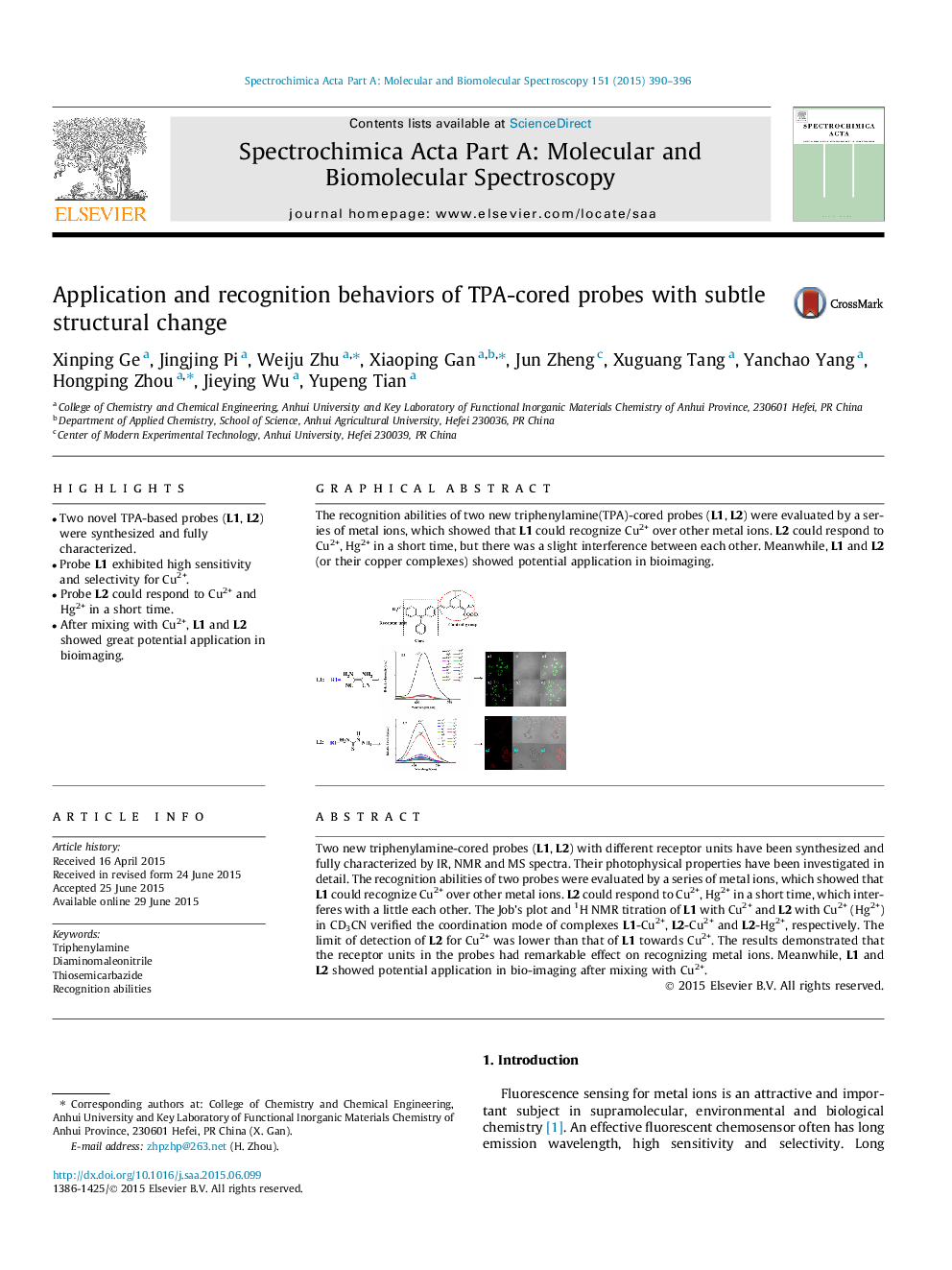| Article ID | Journal | Published Year | Pages | File Type |
|---|---|---|---|---|
| 1230093 | Spectrochimica Acta Part A: Molecular and Biomolecular Spectroscopy | 2015 | 7 Pages |
•Two novel TPA-based probes (L1, L2) were synthesized and fully characterized.•Probe L1 exhibited high sensitivity and selectivity for Cu2+.•Probe L2 could respond to Cu2+ and Hg2+ in a short time.•After mixing with Cu2+, L1 and L2 showed great potential application in bioimaging.
Two new triphenylamine-cored probes (L1, L2) with different receptor units have been synthesized and fully characterized by IR, NMR and MS spectra. Their photophysical properties have been investigated in detail. The recognition abilities of two probes were evaluated by a series of metal ions, which showed that L1 could recognize Cu2+ over other metal ions. L2 could respond to Cu2+, Hg2+ in a short time, which interferes with a little each other. The Job’s plot and 1H NMR titration of L1 with Cu2+ and L2 with Cu2+ (Hg2+) in CD3CN verified the coordination mode of complexes L1-Cu2+, L2-Cu2+ and L2-Hg2+, respectively. The limit of detection of L2 for Cu2+ was lower than that of L1 towards Cu2+. The results demonstrated that the receptor units in the probes had remarkable effect on recognizing metal ions. Meanwhile, L1 and L2 showed potential application in bio-imaging after mixing with Cu2+.
Graphical abstractThe recognition abilities of two new triphenylamine(TPA)-cored probes (L1, L2) were evaluated by a series of metal ions, which showed that L1 could recognize Cu2+ over other metal ions. L2 could respond to Cu2+, Hg2+ in a short time, but there was a slight interference between each other. Meanwhile, L1 and L2 (or their copper complexes) showed potential application in bioimaging.Figure optionsDownload full-size imageDownload as PowerPoint slide
